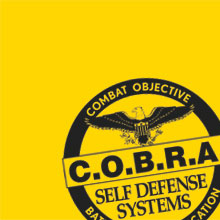
Rule 1:Distance is your friend if the attack has not yet started. The quicker you can spot the pre-attack indicators and get out of there, the better.
Rule 2: If you cannot escape the situation, the next best defense is to get an object between you and the attacker i.e. a table, chair, car etc.
Rule 3: If it is not possible to escape or to place an object between yourself and the attacker, comply if PROPERTY is the motive for the attack. You can replace property. If the attacker tells you to hand over your property or you will be cut/stabbed, it is a good indication that the attacker has not committed to stabbing/cutting you and is using the knife as an intimidation tool. If he was committed he would just proceed with stabbing/cutting you and then take your property. Do not escalate the situation and make it worse than it is. Things can and often do go wrong when doing a knife take-away. You will get cut and you may even die. It is not as easy to take a knife from a determined attacker as it is in class under controlled circumstances against a cooperating partner with a rubber training knife. Even the best self-defense instructors get it right about 60% of the time and fail 40% of the time in uncontrolled circumstances.
Rule 4: If it is not possible to escape or place an object between yourself and the attacker and your LIFE is at stake (kidnapping, rape, committed attack where the attacker is already stabbing or slashing), you have to fight with every muscle in your body until the threat is stopped, even when you are bleeding profusely and you can see your own exposed muscles, fat and bones after being cut or stabbed.
Rule 5: If you do decide to fight, closing the fighting gap between yourself and the attacker is critical i.e. move towards the attacker. Moving backwards is the biggest mistake you can make as you may trip and fall and it is extremely difficult to counter strike while moving backwards. Psychologically, moving backwards confirms to yourself that you are the victim and to the attacker that he is the predator who is busy winning.
Rule 6: Clear the weapon, anchor the weapon, counter strike and then extract the weapon. Remember that fine motor skills often shut down during an attack. Clearing, anchoring and counter striking should thus be done using simple gross motor movements.
Rule 7: If you managed to take away the knife and you counter struck the attacker, do not stay there. Escape. The attacker may recover or may have friends and you may not be as lucky the second time around.
To learn how to do correct clearing, anchoring, counter striking and extraction techniques, join the next C.O.B.R.A. Self-Defense Academy
When Self-Defense Is a Must, Nothing Else Will Do.

